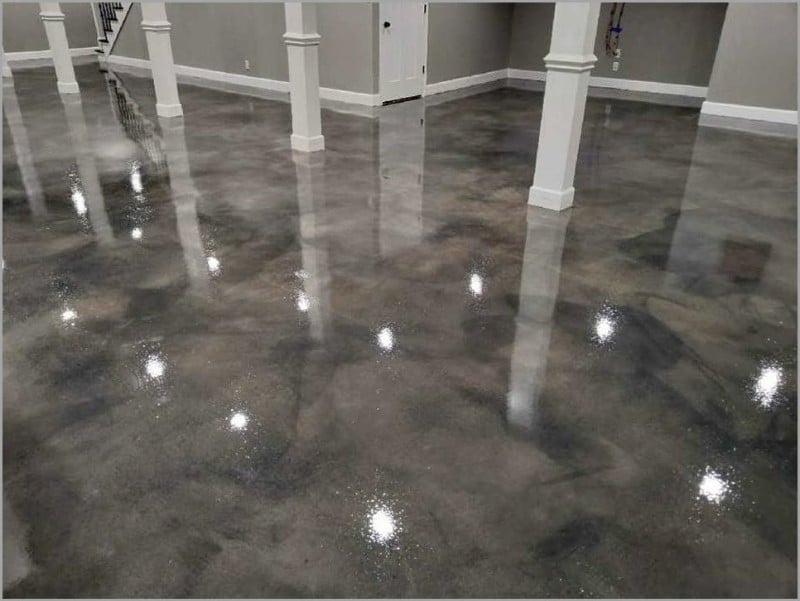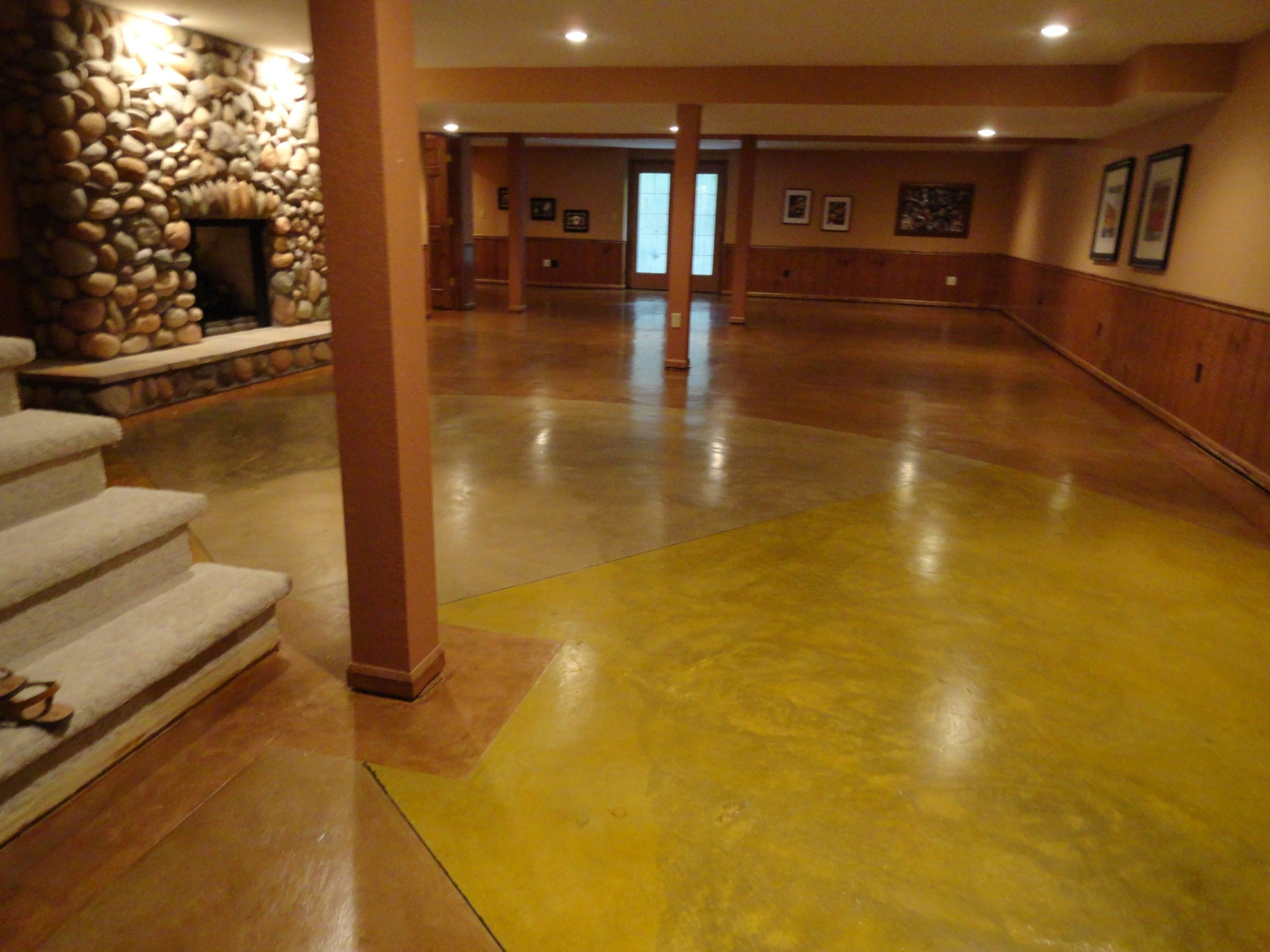Stained concrete austin for kitchens: best uses
Everything About Stained Concrete: A Comprehensive Overview to Its Benefits and Applications
Stained concrete has become a prominent selection for both residential and industrial areas. Its capacity to incorporate aesthetic appeal with usefulness makes it an intriguing option. Numerous staining strategies use a variety of shades and surfaces, enabling customization. However, the benefits expand beyond appearance. Understanding its applications and upkeep needs is crucial for anybody considering this functional material. The nuances of stained concrete welcome even more exploration.
What Is Stained Concrete?

Discoloration can be related to different surface areas, consisting of floorings, driveways, and outdoor patios, making it a functional alternative for both interior and outside areas. The treatment can achieve a series of looks, from natural tones to bold, modern-day designs. Unlike paint, stained concrete preserves its look over time, as it becomes an indispensable component of the concrete itself. In general, stained concrete acts as a reliable technique for changing ordinary concrete right into visually striking surfaces.
Advantages of Stained Concrete
Stained concrete deals significant advantages, specifically in visual allure and toughness - Stained Concrete Floors Austin Texas. Its vibrant colors and distinct patterns boost the aesthetic charm of any area, making it a prominent selection for both property and commercial applications. Furthermore, the durability of stained concrete guarantees that it stays a practical investment gradually, resisting damage
Visual Charm
Among one of the most engaging benefits of utilizing stained concrete is its amazing aesthetic charm. Stained concrete offers a distinct and versatile look that can enhance different layout styles, from modern-day to rustic. The mixture of dynamic shades and elaborate patterns permits home owners and designers to create customized surface areas that can boost the overall ambiance of a room. Unlike conventional flooring alternatives, stained concrete can simulate the appearance of natural stone or refined marble, supplying an upscale appearance without the associated prices. Furthermore, the shiny coating options can reflect light, further brightening interiors. This adaptability makes stained concrete a preferred option for both property and commercial applications, where aesthetic effect is extremely important.
Resilience and Long life
The excellent aesthetic qualities of stained concrete are matched by its impressive sturdiness and longevity - Stained Concrete Floors Austin. Stained concrete surfaces are resistant to use and tear, making them suitable for high-traffic areas both inside your home and outdoors. Their robust nature means they can stand up to severe climate condition, consisting of extreme temperature levels, rainfall, and UV exposure, without considerable destruction. In enhancement, stained concrete calls for very little upkeep contrasted to various other flooring choices, as it does not require constant sealing or redecorating. This long life not only reduces replacement expenses yet also contributes to a sustainable building strategy. In general, stained concrete supplies a long-lasting solution that combines visual appeal with sensible advantages, guaranteeing its worth gradually
Different Kinds Of Staining Techniques
Different staining techniques can substantially affect the visual qualities of concrete surfaces. The 3 key methods include acid discoloration, which reacts chemically with the concrete, water-based staining, which provides a wider variety of shades, and overlay discoloration choices that supply a fresh surface. Each strategy has special features and applications that deal with different design preferences and task demands.
Acid Discoloration Technique
How can property owners transform ordinary concrete surfaces right into aesthetically striking attributes? One effective technique is acid discoloration, a popular method that boosts the all-natural charm of concrete. This procedure involves applying a remedy of water, hydrochloric acid, and metal salts to the concrete surface. As the acid reacts with the lime existing in the concrete, it produces abundant, variegated shades that look like marble or stone. Acid discoloration is recognized for its resilience and resistance to fading, making it a resilient choice for both interior and outdoor applications. Nonetheless, it is important to note that the outcomes can differ based on the initial concrete color and structure - Stained Concrete Austin. Proper application and sealing are crucial for accomplishing the preferred aesthetic and durability
Water-Based Staining Strategy
A prominent option to acid discoloration, the water-based staining technique supplies homeowners a versatile means to boost concrete surfaces. This method makes use of water-soluble dyes and pigments, permitting a wide variety of colors and surfaces. Unlike acid discolorations, water-based discolorations can be related to unsealed concrete and supply a much easier clean-up process. The results can accomplish a much more uniform look and can be layered to create unique results. In addition, water-based stains are typically much less hazardous and release fewer volatile organic compounds (VOCs), making them extra eco-friendly. Property owners might appreciate the capability to customize their concrete surface areas with various tones, enabling imaginative expression while preserving toughness and longevity in their floor covering choices.
Overlay Discoloration Options
Various overlay discoloration choices exist for property owners wanting to renew their concrete surface areas. One popular option is acid discoloration, which responds chemically with the concrete to generate rich, variegated colors. An additional choice is water-based staining, offering a broader color scheme and simpler application. In addition, concrete overlays can be integrated with their explanation stencils for intricate designs, improving appearances. For an extra distinctive finish, homeowners may take into consideration making use of stamped overlays that mimic natural materials like stone or ceramic tile. Each technique supplies one-of-a-kind benefits, from longevity to personalization, enabling a customized touch. Inevitably, the option of overlay discoloration relies on the desired appearance and the problem of the existing concrete, making sure a refreshed and appealing surface.
Applications of Stained Concrete
Stained concrete offers a versatile service for various applications, enhancing both aesthetic charm and capability. This material is generally utilized in household, commercial, and commercial setups, making it a popular option amongst architects and developers. In homes, stained concrete can offer as stylish flooring or outdoor patios, supplying an innovative look while continuing to be durable.
In industrial areas, such as stores and dining establishments, stained concrete contributes to a modern atmosphere and can hold up against heavy foot traffic. Additionally, stained concrete is significantly made use of in public rooms like parks and walkways, where its ability to resemble natural rock or other products adds visual rate of interest.
Furthermore, stained concrete is ideal for pool decks and driveways, offering a slip-resistant surface that is very easy to preserve. In general, the versatility of stained concrete makes it suitable for countless atmospheres, providing to diverse tastes and demands.
Upkeep and Look After Stained Concrete
Correct maintenance guarantees the longevity and charm of stained concrete surfaces. Regular cleansing is important; making use of a mild cleaning agent and water with a soft-bristle brush assists get rid of dirt and crud without harming the coating. It is recommended to stay clear of rough chemicals that can remove the stain or sealer.
Sealing stained concrete is vital for defense against dampness, spots, and use. A high-grade sealant must be reapplied each to three years, depending on the traffic and exposure the surface sustains. Additionally, dealing with spills without delay will prevent staining and staining.

Price Factors To Consider for Stained Concrete Projects
When preparing a stained concrete project, spending plan considerations play an important duty in identifying the total price. The expenses associated with stained concrete can vary substantially based upon a number of factors. The dimension of the location to be stained directly affects material and labor costs. Larger spaces will naturally call for even more sources. Second, the kind of stain selected-- acid-based or water-based-- can influence rates, with acid spots usually being extra expensive. Furthermore, the complexity of the style, consisting of patterns or several colors, can boost labor costs. Preparation job, such as cleansing and grinding the concrete surface area, includes to the initial expenses. Lastly, the option between DIY installment and employing a professional service provider will certainly even more affect the budget. Understanding these variables allows home owners to make educated financial decisions about their stained concrete jobs, ensuring they attain the desired visual within their monetary ways.
Tips for Choosing the Right Stained Concrete for Your Area
Picking the best stained concrete for a particular area involves careful reflection of different aspects past simply budget plan. First, one should examine the desired usage of the area. High-traffic zones might need more durable finishes, while ornamental applications can focus on appearances.
The color combination is one more more information important facet; the picked shades need to harmonize with existing style and lighting. It's also essential to take into consideration the surface area appearance, as smooth coatings can enhance elegance, while textured options may assure safety in damp locations.
Regional climate and environmental problems play a substantial duty in the long life and upkeep of stained concrete, affecting the selection of sealers and surfaces.
Consulting with specialists can give beneficial understandings tailored to details needs, assuring the selection of the perfect stained concrete that straightens with both performance and style.
Often Asked Concerns
Can Stained Concrete Be Applied Over Existing Floor Covering?
Stained concrete can certainly be applied over existing flooring, supplied the surface is secure and appropriately prepared. This technique permits a visual upgrade without the requirement for total removal of the initial floor covering materials.
For How Long Does Stained Concrete Last?
Stained concrete can last for years when effectively kept. Variables such as traffic, ecological conditions, and application methods substantially influence its longevity, with many installments continuing to be vibrant and intact for 10 to three decades.
Is Stained Concrete Slippery When Damp?
Stained concrete can be unsafe when wet, as the coating may create a smooth surface. Nevertheless, using basics non-slip ingredients or textured surfaces can mitigate this issue, improving safety without endangering the visual charm of the concrete.
Can I Stain Concrete Myself, or Should I Work with an Expert?
The decision to tarnish concrete directly or work with an expert rest on skill degree and project intricacy. While DIY discoloration can conserve cash, experts ensure optimal outcomes, especially for intricate designs or huge surface areas.
What Colors Are Readily Available for Stained Concrete?
The selection of shades available for stained concrete includes earthy tones like browns and tans, dynamic tones such as reds and blues, and softer tones like pastels. This palette permits creative, customized layout options.